Download Biodiesel
Transcript
ENGR 491 SENIOR DESIGN PROJECT Biodiesel User’s Manual 2003-2004 Messiah College Department of Engineering Brandon Apple _____________________ Jon Bitterman _____________________ Becky Gast _____________________ Kyle McNamara _____________________ Mike Mullen _____________________ Tamika Pinkney _____________________ TABLE OF CONTENTS 1. Introduction 2. Ingredients 2.1 Oil 2.2 Methanol 2.3 Lye 3. Adding Oil to the System 4. Adding Methanol and Lye 5. Operation 5.1 Manual Steps 5.2 Automated Steps 6. Cleaning 7. Maintenance 8. Appendix 8.1 Oil Yields 8.2 Oil and Ester Characteristics 8.3 System Diagram 8.4 Process Diagram 8.4 Control Board Production of Biodiesel – Senior Engineering User’s Manual 2003-2004 3 3 3 3 3 4 4 5 5 6 7 7 8 8 9 10 11 13 2 1. INTRODUCTION The Production of Biodiesel senior project team created a versatile system for converting cooking oil into usable fuel for diesel vehicles. The system can accept a variety of vegetable-based oils and can produce a range of batch sizes. With the work in automation of the E-Biodiesel senior project team, the system can produce batches with little user input. 2. INGREDIENTS 2.1 Oil Biodiesel can be produced out of a variety of natural products. Every oil will require differing amounts of chemicals for reaction and will produce a fuel with slightly differing qualities. Section 8.1 contains information on approximate fuel yields of many agricultural products, and Section 8.2 gives information on the oil and ester characteristics of these products. Virgin oil can be used as well as waste oil. Typically, virgin oils require smaller amounts of the reactants to produce quality fuel. However, the purpose of this project was to enable waste cooking oil to be recycled into usable fuel. This will require a higher cost for the amount of chemicals needed, but will probably result in saving the user money since waste cooking oil is readily available for no cost at many dining facilities. 2.2 Methanol Methanol, methyl alcohol, is a common fuel used in auto racing. It can be found at many gas stations located near racing tracks, especially tracks where private owners are allowed to race. The methanol must be 99.9% pure for the reaction to be complete. The racing fuel is often not labeled with purity, but rather on a grading system. Grade A, virgin methanol has a high enough purity to ensure the reaction. 2.3 Lye Lye, also referred to as sodium hydroxide or caustic soda, can be found in reagent grade at chemical stores or more commonly as drain cleaner in grocery stores. The lye should be at least 95% pure. Red Devil brand lye is 99% pure and readily available. In storing and using the lye, air tight containers should be used since lye absorbs humidity in the air. Production of Biodiesel – Senior Engineering User’s Manual 2003-2004 3 3. ADDING OIL TO THE SYSTEM Before the oil can be added to the system, it should be filtered for any large sediment that may be in the oil. If waste cooking oil is being used, often there can be particles of food in the oil that could clog the system or cause damage to the pumps. Our team used a window screen attached to a metal ring could be fitted to 15 gallon steel tanks. While the oil was still warm, we poured the liquid oil through the filter and into a storage/transportation tank. From this tank, the oil could be measured out and poured into the heating tank of our system, after ensuring that the valve on the bottom of the tank is closed. NOTE: 3 gallons is the minimum batch of oil that can be used to ensure that both immersion heaters are fully covered and that the pump will be primed. 4. ADDING METHANOL AND LYE TO THE SYSTEM WARNING! Both methanol and lye are potentially harmful substances. Methanol, methyl alcohol, is a skin irritant as well as harmful if swallowed. The fumes from the methanol should not be inhaled, so handle in a well ventilated area. Lye, also called sodium hydroxide or caustic soda, is a caustic base that should not be ingested or come in contact with skin. If contact with skin should occur, vinegar can be used to rinse, neutralizing the base. Once the methanol and lye are mixed, methoxide is produced. This substance is harmful if touched, ingested, inhaled, or if fumes come in contact with eyes. Safety equipment must be used, including appropriate eye wear, gloves, and respiratory mask. To determine how much lye needs to be used, a titration should be performed on a sample of the oil that is going to be input to the system. The titration determines the fatty free acid content of the oil by indicating its pH. If available, a digital pH meter could eliminate the titration, or litmus paper could be used as well. Below is a set of basic instructions for the titration. If more detailed instructions are needed, visit http://www.journeytoforever.org/biodiesel_mike.html. Titration Steps (See Section 8.3 for pictures) 1. Weigh out 1 gram of cooking oil into an Erlenmeyer flask. 2. Add 10 mL of Isopropyl Alcohol to the oil sample and mix vigorously. 3. Add one packet of phenolphthalein to the mixture and mix vigorously. 4. Fill buret with 0.1 M Sodium Hydroxide and record initial volume. 5. Titrate the sample with the Sodium Hydroxide until mixture changes color and color remains. 6. Record final volume of Sodium Hydroxide in buret. Production of Biodiesel – Senior Engineering User’s Manual 2003-2004 4 Lye Calculation Add 3.5 to the number of milliliters of sodium hydroxide used to titrate the oil if you are using waste cooking oil. (Do not add the 3.5 if you are using fresh cooking oil.) This is the number of grams of lye needed to be added into the system for every liter of oil added into the system. For example, if the number of milliliters of sodium hydroxide was 2, then 5.5 grams of lye would be needed for every liter of waste cooking oil. Methanol Calculation For every gallon of oil added to the system, 1/5 of a gallon of methanol must be added to the system. So for a 3 gallon batch of oil, 3/5 of a gallon of methanol must be used. Once the amounts of the lye and methanol have been determined, both are ready to be input to the system. Ensuring that valve 5 (see Section 8.3) is closed, the methanol can be poured into the methoxide tank first. Then the lye can be added to the methoxide tank. Once the two are in the tank, the lid should be screwed on. 5. OPERATION 5.1 Manual Steps NOTE: If the processor is set-up for automated use, skip these manual steps and follow the automated instructions. Once the raw materials have been added in the appropriate manner, the system is ready to be initiated. Follow the steps below, referencing the diagrams in Section 8.3 and Section 8.4. (All valves are initially closed and heaters and pumps turned off.) 1. Turn on the immersion heaters in the heating tank. The target temperature is between 50 – 60 degrees Celsius. Some stirring of the oil will ensure an even temperature distribution and speed the heating process, but it is not necessary. 2. While the oil is heating, the methanol and lye can begin to circulate. Turn on the methoxide circulation pump. The methanol and lye will circulate with turbulence, creating a methoxide solution. There is no set length of time to circulate the methoxide, but ensure that the lye has been fully dissolved into the methanol. 3. Once the oil is heated and the lye fully dissolved, the circulation pump can be turned off. 4. Valve 1 is opened, draining the oil into the mixing tank. After the oil has fully drained, valve 1 is closed, and valves 2 and 4 are opened. The magnetic drive pump is then initiated, circulating the oil. 5. As the oil circulates, valves 3 and 5 are opened allowing the methoxide to drain into the circulating line, by force of gravity. User should be aware that there is a manual Production of Biodiesel – Senior Engineering User’s Manual 2003-2004 5 valve directly beside valve 3 that acts as a flow limiter. The manual valve should be just slightly open, to allow a slow feed of the methoxide into the circulation line. 6. As the methoxide tank and line drain completely, valves 3 and 5 should be shut to stop air from being pulled into the oil circulation line. 7. Once the methoxide is completely drained into the system, the circulation through the magnetic drive pump should be continued for an hour to ensure a thorough mixture. 8. After the mixing, valve 2 is shut and valve 6 opened in rapid succession. As soon as air begins to be sucked into the magnetic drive pump, the pump needs to be shut off. This rapid progression allows the oil that is in the line between valve 2 and the pump to be pulled up to the pump before it is shut off, allowing more oil to be pushed into the mixing tank. Once the pump is turned off, the excess oil in the line is pushed by gravity into the waste discharge container. 9. Valves 4 and 6 can be shut, and the mixture of oil and methoxide allowed to settle for 8 hours. (NOTE: User should visually inspect the surface of the fluid in the mixing tank. If there is a foamy, light colored layer on the surface, user should stir to break up the layer. This will ensure complete reaction.) 10. After the settling time, user should be able to see, through the tank wall, a distinct line of separation near the bottom of the tank, where the denser glycerin has settled to the bottom and the Biodiesel is left on top. Valves 2 and 6 are opened to allow only the glycerin to drain into the waste discharge container. Valve 6 should be shut as soon as the glycerin drains out completely and the discharge changes to a noticeably lighter color. 11. Biodiesel then primes the magnetic drive pump. Valve 7 is opened and the pump turned on. This pumps the fuel through the filter and into a storage tank. 12. Once the mixing tank has completely drained, the pump is turned off and the excess fuel in the line drained. All valves are then closed. 13. Biodiesel should be kept in air tight containers in a cool place, and is ready to use. 5.2 Automated Steps Once the raw materials have been added in the appropriate manner, the system is ready to be initiated. Follow the steps below, referencing the pictures in Section 8.5. 1. Powering the PLC In order to power the PLC, first plug in the machine and then push the red pushbutton located above the “Emergency Stop” sign. You should hear a “click,” from the relay, indicating that power is being supplied to the PLC. 2. Starting the Process To start the oil heating and methoxide mixing processes, you need to push the “Manual Start” pushbutton. As soon as the pushbutton is pushed the mimic board should look just as it does in the picture. If this does not occur there is some thing wrong with the wiring. Consult the electrical drawings for further help. Production of Biodiesel – Senior Engineering User’s Manual 2003-2004 6 3. Mixing Cycle The mixing cycle should start immediately after a 15 minute duration. The mimic board should appear as in the picture. If this does not occur there is something wrong with the wiring. Consult the electrical drawings for further help. Also, the LED labeled Valve 1 should stay lit for the rest of the process. 4. Draining the Glycerin When the Biodiesel has settled for eight hours, the process should automatically alert you to drain the glycerin. When this occurs, you should push in the pushbutton above the alert LED until you are satisfied that all the glycerin is released from the mixing tank. Pushing the button multiple times will not interrupt the sequence, but do not push the button once the switch has been turned to store the Biodiesel. 5. Storing the Biodiesel As soon as you release the glycerin pushbutton, the LED to alert you to begin storing should come on. To start the storing process, simply turn the switch to the right and the mimic board should appear as in the picture. Valve one should close at this time. 6. Stopping the Process To stop the process, simply turn the store Biodiesel switch back to the left, and push the mushroom pushbutton in. 7. Emergency Stop To stop the program in an emergency, push in the mushroom pushbutton. To restart the process, turn the mushroom pushbutton to the right, and pull out. Then push the red pushbutton. 6. CLEANING 1. Allow contents in line to be gravity fed to waste container. 2. If possible, use airline to blow contents in line out into waste container. 3. If the system is going to be unused for awhile, run system with soapy water to clean oil from tanks and lines. 4. Make sure system is fully dry before making next batch of Biodiesel. 7. MAINTENACE 1. The filter will need to be changed if there is not a distinct color change between the incoming and outgoing Biodiesel, or if the pump has difficulty pushing Biodiesel through the filter. 2. Filters can be washed, dried, and reused. 3. Check the seals of the valves and pumps for corrosion. 4. Check holes and seals on tanks for leaks. 5. Check heating tank for rust. 6. Check for kinked hose or blockage of lines. 7. Check electrical wiring for wear or breaks. 8. Check methoxide tank for residual lye. 9. Check bottom of heating tank for sedimentation that needs to be cleaned out. Production of Biodiesel – Senior Engineering User’s Manual 2003-2004 7 8. APPENDIX 8.1 Oil Yields Crop corn (maize) cashew nut oats lupine kenaf calendula cotton hemp soybean coffee linseed (flax) hazelnuts euphorbia pumpkin seed coriander mustard seed camelina sesame safflower rice tung oil tree sunflowers cocoa (cacao) peanuts opium poppy rapeseed olives castor beans pecan nuts jojoba jatropha macadamia nuts brazil nuts avocado coconut oil palm kg oil/ha litres oil/ha lbs oil/acre US gal/acre 145 148 183 195 230 256 273 305 375 386 402 405 440 449 450 481 490 585 655 696 790 800 863 890 978 1000 1019 1188 1505 1528 1590 1887 2010 2217 2260 5000 172 176 217 232 273 305 325 363 446 459 478 482 524 534 536 572 583 696 779 828 940 952 1026 1059 1163 1190 1212 1413 1791 1818 1892 2246 2392 2638 2689 5950 129 132 163 175 205 229 244 272 335 345 359 362 393 401 402 430 438 522 585 622 705 714 771 795 873 893 910 1061 1344 1365 1420 1685 1795 1980 2018 4465 18 19 23 25 29 33 35 39 48 49 51 51 56 57 57 61 62 74 83 88 100 102 110 113 124 127 129 151 191 194 202 240 255 282 287 635 Found at http://www.journeytoforever.org/biodiesel_yield.html Production of Biodiesel – Senior Engineering User’s Manual 2003-2004 8 8.2 Oil and Ester Characteristics Type of Oil Rapeseed oil, h. eruc. Oils and esters characteristics Melting Range deg C Iodine Methyl Ethyl number Oil / Fat Ester Ester Cetane number 5 0 -2 97 to 105 55 Rapeseed oil, i. eruc. Sunflower oil Olive oil -5 -18 -12 -10 -12 -6 -12 -14 -8 110 to 115 125 to 135 77 to 94 58 52 60 Soybean oil Cotton seed oil Corn oil -12 0 -5 -10 -5 -10 -12 -8 -12 125 to 140 100 to 115 115 to 124 53 55 53 Coconut oil Palm kernel oil Palm oil 20 to 24 20 to 26 30 to 38 -9 -8 14 -6 -8 10 8 to 10 12 to 18 44 to 58 70 70 65 Palm oleine Palm stearine Tallow 20 to 25 35 to 40 35 to 40 5 21 16 3 18 12 85 to 95 20 to 45 50 to 60 65 85 75 Lard 32 to 36 14 10 60 to 70 65 Found at http://www.journeytoforever.org/biodiesel_yield.html Production of Biodiesel – Senior Engineering User’s Manual 2003-2004 9 8.3 System Diagram Heating Tank 4 7 5 Micron Filter 1 Mixing Tank Magnetic Drive Pump Storage Tank 3 2 Methoxide Tank 5 6 Waste Discharge Circulation Pump Production of Biodiesel – Senior Engineering User’s Manual 2003-2004 10 8.4 Process Diagram Heating Tank Heating Tank 5 Micron Filter Mixing Tank Magnetic Drive Pump 5 Micron Filter Mixing Tank Storage Tank Magnetic Drive Pump Methoxide Tank Methoxide Tank Waste Discharge Waste Discharge Circulation Pump = Valve Circulation Pump = Valve Initial Setup Circulating Heated Oil Heating Tank Heating Tank 5 Micron Filter Mixing Tank Magnetic Drive Pump 5 Micron Filter Mixing Tank Storage Tank Magnetic Drive Pump Waste Discharge Waste Discharge Circulation Pump Circulation Pump = Valve Heating and Methoxide Circulation Addition of Methoxide to Circulating Heated Oil Heating Tank Heating Tank 5 Micron Filter 5 Micron Filter Mixing Tank Magnetic Drive Pump Mixing Tank Storage Tank Magnetic Drive Pump Storage Tank Methoxide Tank Methoxide Tank Waste Discharge Waste Discharge = Valve Storage Tank Methoxide Tank Methoxide Tank = Valve Storage Tank Circulation Pump Draining Heated Oil Production of Biodiesel – Senior Engineering User’s Manual 2003-2004 = Valve Circulation Pump Circulating Oil-Methoxide Mixture 11 Heating Tank Heating Tank 5 Micron Filter Mixing Tank Magnetic Drive Pump 5 Micron Filter Mixing Tank Storage Tank Magnetic Drive Pump Methoxide Tank Methoxide Tank Waste Discharge Waste Discharge Circulation Pump = Valve Circulation Pump = Valve Settling of Oil-Methoxide Mixture Glycerin Fully Drained Heating Tank Heating Tank 5 Micron Filter Mixing Tank Magnetic Drive Pump 5 Micron Filter Mixing Tank Storage Tank Magnetic Drive Pump Methoxide Tank Waste Discharge Circulation Pump Circulation Pump = Valve Fully Settled Biodiesel and Glycerin Pumping Biodiesel to Storage Tank Heating Tank Heating Tank 5 Micron Filter Mixing Tank Magnetic Drive Pump 5 Micron Filter Mixing Tank Storage Tank Magnetic Drive Pump Methoxide Tank Storage Tank Methoxide Tank Waste Discharge = Valve Storage Tank Methoxide Tank Waste Discharge = Valve Storage Tank Waste Discharge Circulation Pump Draining Glycerin Production of Biodiesel – Senior Engineering User’s Manual 2003-2004 = Valve Circulation Pump Completed Process 12 8.5 Control Board Starting the Process Mixing Cycle Draining the Glycerin Production of Biodiesel – Senior Engineering User’s Manual 2003-2004 13 Storing the Biodiesel Stopping the Process Production of Biodiesel – Senior Engineering User’s Manual 2003-2004 14














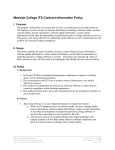
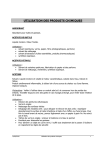


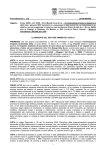


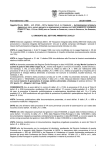
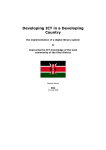
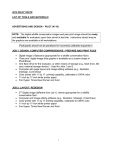

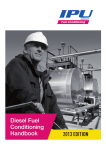
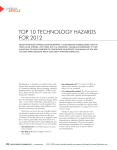


![[nl] Gebruiksaanwijzing 3 [it] Istruzioni per l`uso 24 Kookplaat Piano](http://vs1.manualzilla.com/store/data/006146202_1-81945291c359476eb7c6f60cdcf78dc5-150x150.png)

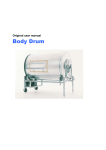
![[nl] Gebruiksaanwijzing 3 [it] Istruzioni per l`uso 21](http://vs1.manualzilla.com/store/data/006141649_1-2372192b1b2cf62dc11b46af9e023b71-150x150.png)